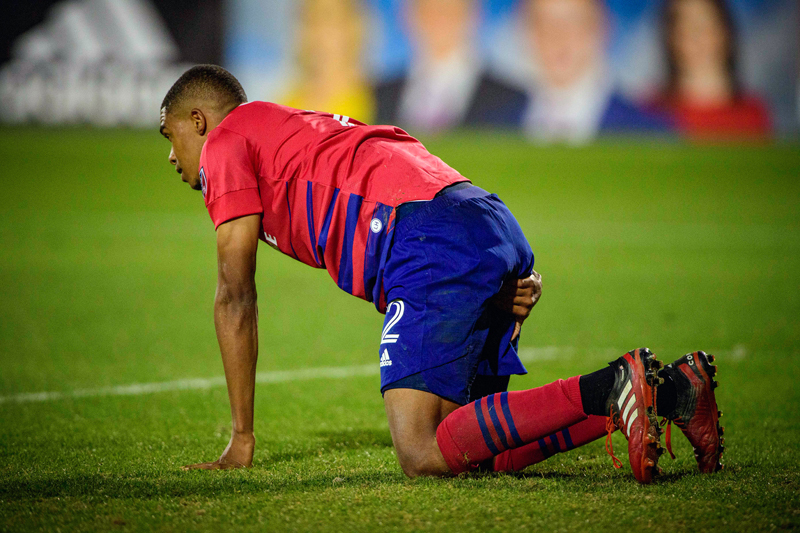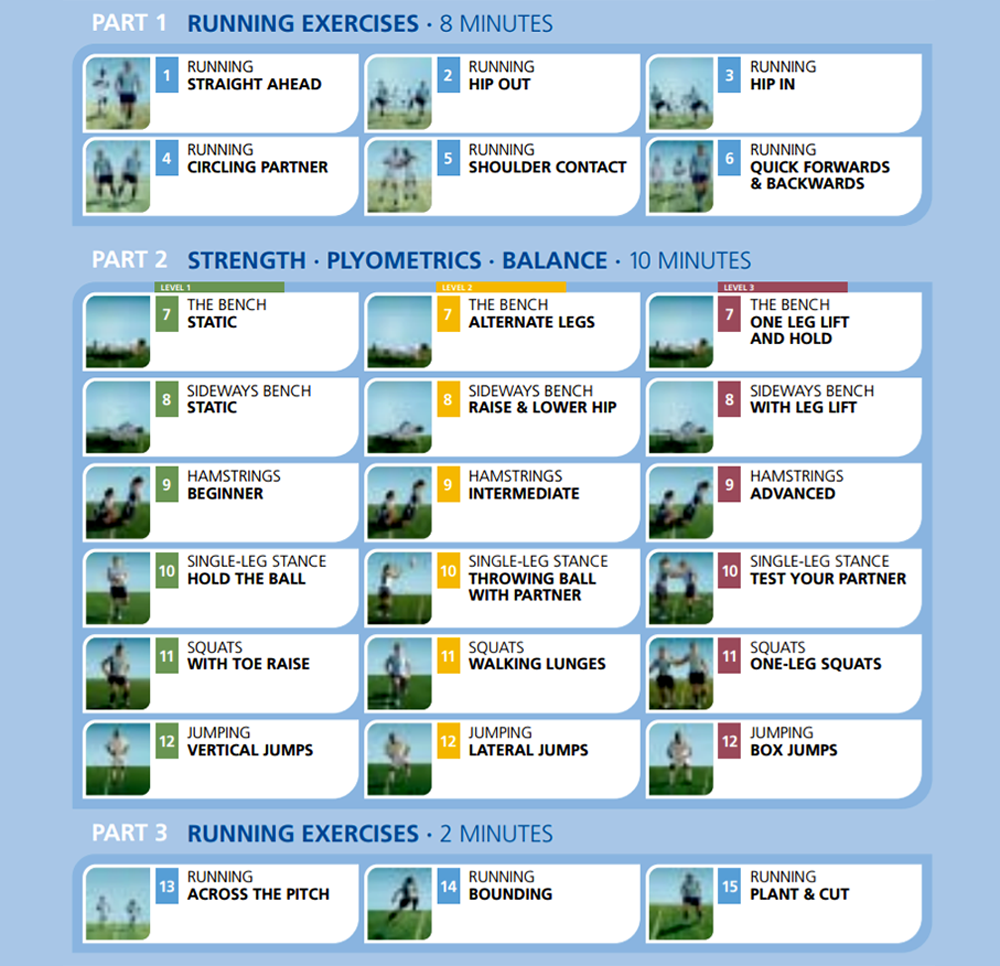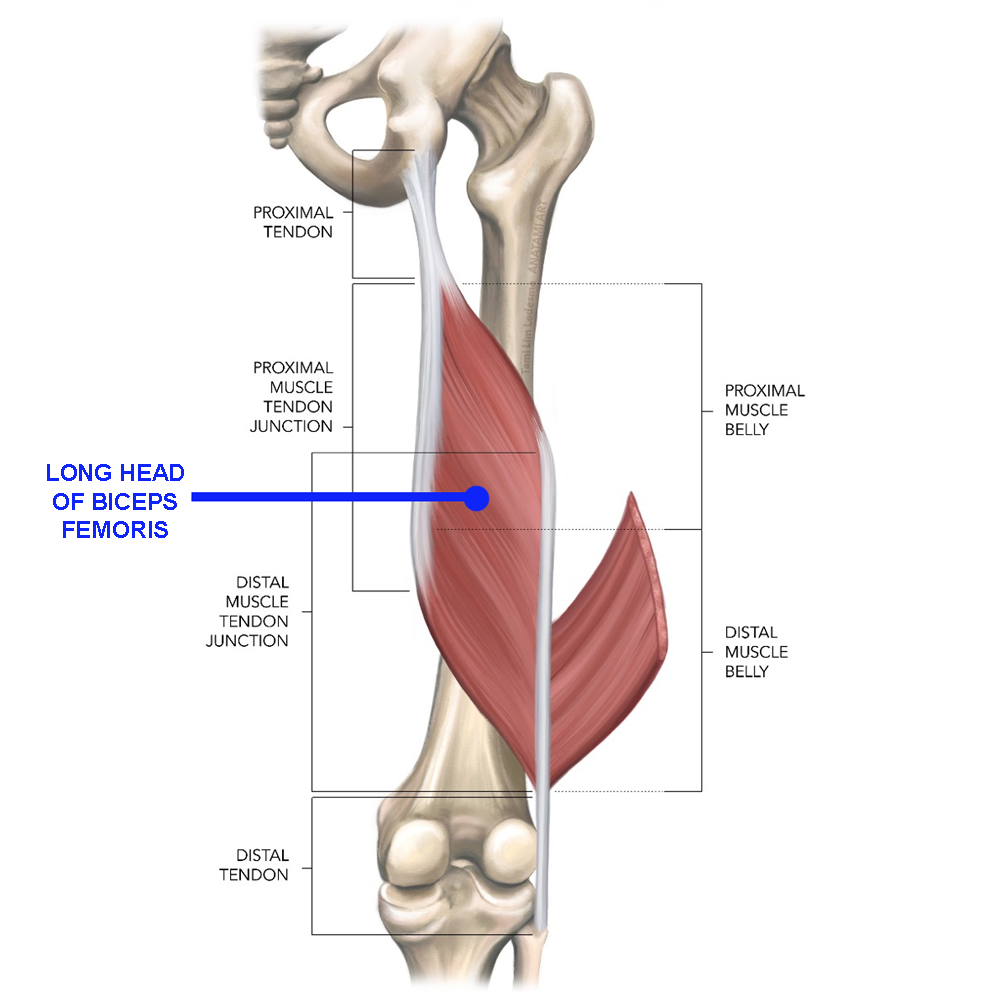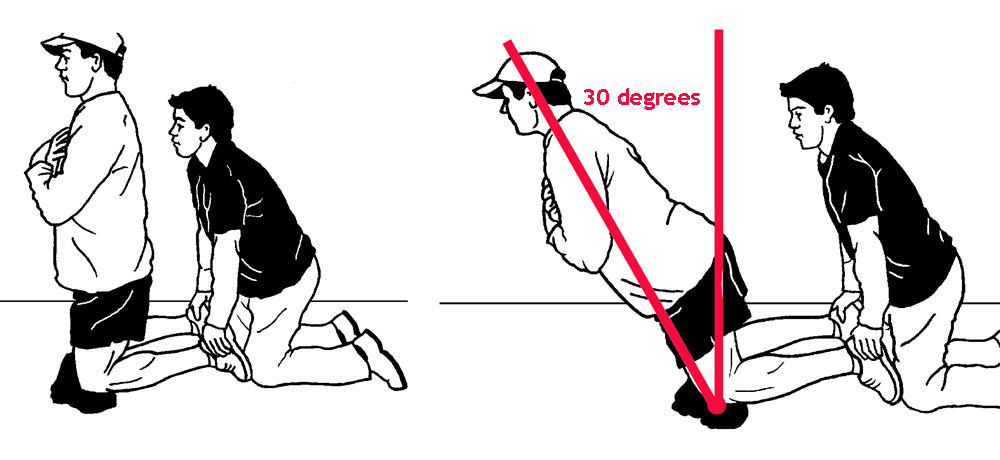You are viewing 1 of your 1 free articles. For unlimited access take a risk-free trial
Injury prevention: reading the runes for hamstring injuries
Can screening tests identify athletes at an increased risk of hamstring injury? SPB looks at the evidence
Hamstring strain injuries (HSIs) are one of the most common injuries in soccer players(1). Research suggests that HSIs account for around one in seven of all injuries sustained in the sport(2), and up to 47% of all muscle injuries(3)! Furthermore, research on professional soccer players in Europe has found that on average, a player will miss 18 days and three matches per season due to an HIS, and that HSIs account for around 25% of all player absences from games(4).
Interventions to prevent hamstring injury
Given the high rates of muscle (especially hamstring) injury and re-injury among soccer players, and the financial pressures of the modern game, it’s perhaps unsurprising that coaches, trainers and clinicians caring for players find that treatment of injuries in players is a frustrating and a never-ending challenge. And then of course, there’s the frustration experienced by players! Unsurprisingly therefore, there’s been an increasing drive in soccer circles to try and indentify they key risk factors and injury mechanisms related to HSIs, and to use this knowledge to firstly detect injury-prone players and then to design intervention measures to successfully prevent injuries.
One of the most widely-adopted general injury prevention program deployed in soccer was FIFA’s ‘The 11+’ - a series of running and proprioception (the ability to sense one’s own movement and position in space) drills to be used as a warm-up routine for amateur players with progressions for more advanced players (see figure 1). This program is now used by professionals and amateurs all around the world (for a free and fully downloadable copy of FIFA’s 11+ program in PDF form, visit this link). While the 11+ program has been judged to be beneficial, research suggests that it primarily impacts the incidence of mild, overuse, and training injuries in teams with low-skill (ie amateur) players(5). However, for professional players, this kind of intervention seems not produce significant injury-reduction benefits when assessed on injury risk per hour played, with no noticeable reduction in hamstring injuries(6,7).
Figure 1: Overview of the FIFA 11+ program*
The ‘11+’ consists of three sections (running/strength+plyometrics/running) with a total of 15 exercises performed in a specified sequence at the start of each training session.
*Image courtesy of FIFA. Visit www.sportsphysiotherapy.org.nz/documents/Injury%20prevention/fifa%2011.pdf for a free PDF download of a detailed description of the program.
Specific hamstring injury prevention
The mixed results observed for soccer players following FIFA’s generalized 11+ program are perhaps unsurprising. To specifically target hamstring injury risk reduction requires a more specific approach, which itself requires an understanding of the kinds of movement/loading patterns likely to precipitate an injury. Data shows that the kinds of movements/loading patterns associated with a subsequent hamstring injury are as follows:
- During high-speed running activities with the long head of the biceps femoris (see figure 2) being the most common injury site(8).
- During other high-power activities such as acceleration, deceleration, kicking, and change of direction movements(9).
- In running-related HSIs, the initial and late swing-phases (ie as the trailing leg is stretched to the rear and when the leading leg stretches forward) of high-speed running seem to be particularly implicated. Research has demonstrated that large loading forces affect the hamstring muscles during both of these phases, and that the mechanisms of injury may relate to the timing of these peak forces(10-12).
- For all the above, a previous history of HSI(13) and/or older age(14) are both very well documented additional risk factors for injury. In plain English, older players and those with an HSI history will be much more vulnerable to hamstring injury, and at significantly lower loading levels, than younger players with no previous HSIs.
Figure 2: Location of long head of biceps femoris of the hamstring muscles
Depicts right leg viewed from behind from knee up to pelvis. Other muscles omitted for clarity.
How to screen?
Given what is understood about the mechanism of injury in hamstrings, any screening or strengthening interventions should aim to challenge the hamstring muscles in such a way that can safely test their capacity to tolerate these kinds of loading forces. In addition, the screening process should be able to determine whether the supporting muscles and the athlete’s neural input –ie his/her balance, propioception etc - is conducive to maximum hamstring resilience, or acts in such a way as to hamper it. In previous studies, a number of factors have been proposed as being associated with an increased risk of HSI (and therefore relevant in a screening process to determine injury risk). These include(15-18):
- Lower limb eccentric muscle strength (strength as the muscle lengthens – ie lowers weight).
- Hamstring/quadriceps (H/Q) strength ratio – ie the strength balance between the two muscle groups.
- Lower-limb muscle flexibility.
- Balance, agility and propioception.
The problem however is that when these factors have been examined carefully in the context of actual hamstring injury rates, the results have been far from conclusive(19-21).
New research
In an attempt to provide some definitive answers to this perennial problem, a comprehensive study looking at elite soccer players playing in the Kosovo National Premier League over a whole season has tried to answer the question of how to identify players at increased of HIS. This was done by using a battery of screening tests and correlating them with the subsequent hamstring injury rate per hour of play over the course of the season(22).
To do this, a total of 143 soccer players from 11 teams in Kosovo were recruited and monitored before and during the season. To identify possible prevalent musculoskeletal or medical conditions, a widespread health and fitness assessment was performed including isokinetic strength (see elsewhere in this issue) testing, Nordic hamstring strength test and functional tests. Players suffering from acute lower-limb injuries or recovering from recent surgical interventions (within the previous 12 months) were excluded. In addition to testing, all the players completed comprehensive questionnaires to identify possible musculoskeletal or medical conditions, or any previous hamstring strains, as well as performance impairments that could possibly increase the risk of HSIs.
The tests and screening
The screening tests were comprehensive and multi-faceted, and included the following:
*Anthropometric and body composition measurements (BMI – ie ratio of lean muscle tissue to fat).
*A battery of fitness tests, which included:
- Sit and reach testing to assess hamstring flexibility.
- The Nordic hamstring strength test (hamstring strength was classified as either ‘failed’ or ‘passed’ depending on whether the subjects could hold the position beyond 30 degrees from the vertical starting position – see figure 3).
- Dynamic measurements of eccentric and concentric hamstring and quadriceps strength using isokinetic testing (performed over a 100-degree range) in order to calculate hamstring to quadriceps (H/Q) strength ratios.
- Countermovement jump performance.
- Speed, acceleration and agility/change-of-direction tests (using the Illinois Agility Test , which has shown to be a reliable and valid test in team sports).(23)
Using a relatively large sample size for the duration of a whole season allowed the researchers to collect a large body of data, making for more reliable conclusions. Over the entire study period, a total of 36,833 hours of exposure time, consisting of 31,998 hours of training and 4,834 hours of match play, were registered by the players. On average, each player participated in 25 matches and attended 149 training sessions. This resulted in a mean exposure time of 258 hours per player - 33.8 hours (13.1%) of match play and 223.8 hours (86.9%) of training.
Figure 3: Nordic hamstring strength test
A pass is awarded if subjects can maintain the position at or beyond 30 degrees from the vertical starting position.
The findings
The key injury incidence findings from this study were as follows:
- There were 43 HSIs in total (16 during training and 27 during matches (equating to an 11-fold higher injury rate per hour in matches).
- The total injury incidence for the hamstring muscles was 1.17 injuries/1000 hours.
- The players’ positions on the soccer field had no bearing on injury incidence.
- On average 27.9% of the players sustained at least one hamstring injury.
- Of the HSIs recorded, 23% involved a hamstring re-injury.
The key question however is whether any of the screening tests were able to determine those players at particular risk of HSIs. The findings here are summarized in table 1 below. Essentially, higher age, a previous hamstring injury and higher BMI were associated with an increased risk of injury. A failed Nordic strength test was also associated with higher injury risk, as was poorer quadriceps torque outputs when assessed on the dynamometer at 60 degrees per second. None of the other factors seemed to impact injury incidence.
Table 1: Factors significantly statistically associated with increased risk of HSI(22)
|
Factor |
Uninjured player average |
Injured player average |
|
Age (years) |
22.2 |
26.1 |
|
Body mass (kg) |
73.2 |
77.0 |
|
BMI (kg/m2) |
22.6 |
23.6 |
|
Previous HSI (%) |
23.5 |
42.5 |
|
Nordic strength test (pass rate %) |
73 |
16 |
|
Relative quadriceps torque at 60 degrees per second (Nm/kg) |
3.07 dominant; 3.10 non-dominant |
2.91 dominant; 2.92 non-dominant |
Practical implications for soccer players, coaches and clinicians
On the face of it, these results drawn from a large sample of players seems to provide useful data for coaches and clinicians seeking to screen their players for, and to minimize the risk of a hamstring injury going forward. However, the screened factors that significantly impacted injury rates were few. When the unmodifiable factors (age, previous injuries – these cannot be changed by interventions!) are removed, only body mass/BMI, Nordic st rength test performance and quadriceps torque were associated with HSI risk. Another limitation of the study is that screening/testing was not performed in the fatigued state such as that typically experienced towards the end of a match.
These findings are perhaps not as definitive as we would wish; while body composition and BMI can be improved with appropriate dietary and nutritional interventions, they are not ‘trainable’ in the same way that other parameters such as strength flexibility, agility etc are. In terms of trainable factors, only a failed Nordic strength test predicted the increased risk of injury with a high degree of significance, while reduced quadriceps torque also predicted increased injury risk, albeit with much lower confidence.
So what do all of these findings mean for clinicians, coaches and trainers with soccer players in their care? Firstly, it is important to understand that there is still no scientifically validated screening protocol to accurately identify players at risk of HSI. In the above study, a failed Nordic hamstring strength test, a previous injury history, and reduced quadriceps torque did collectively predict increased risk but only by around 26% - ie, in a random sample of players, many players who performed well on these tests would still go onto develop injury. In short, there is still no bulletproof screening procedure for HSI risk.
Having said that, the accumulating evidence does suggest that specific strength training of the hamstrings - using the Nordic hamstring curl exercise - IS likely to confer a significant amount of additional resilience against hamstring injury – benefits documented elsewhere in the literature(24). The increased incidence of HSI in the older players, those with higher BMI and with a previous history of injury in this study is in line with findings from other studies(25). Therefore coaches, trainers and clinicians might be wise to preferentially target older players, with a previous history of HSIs for specific hamstring training. These players may also benefit from a less intense match schedule with longer recoveries and guidance/support on nutritional strategies to optimize BMI and body composition.
Along with developing hamstring strength (using Nordic curls), developing an optimum hamstring/quadriceps (H/Q) strength ratio is also an important component of hamstring health; readers are directed to this article for more information on this topic. As for hamstring strength training, it’s important to achieve this in a manner that closely reflects real world demands of hamstring loading during sport and activity, which necessarily involves gluteal (buttock) activation and co-contraction(26,27) The video from the excellent (and highly recommended) video channel (see here - ‘Athlean-X’ ) provides some great hamstring/gluteal strengthening examples that can be performed with minimal equipment requirements and in most settings!
References
- Am J Sports Med. 2011 Jun; 39(6):1226-32
- Am J Sports Med. 2018 Jul; 46(9):2203-2210
- Scand J Med Sci Sports. 2013 Jun; 23(3):253-62
- Br J Sports Med. 2004 Feb; 38(1):36-41
- Am J Sports Med. 2002;30(5):652-9
- Br J Sports Med. 2012 Dec;46(16):1114-8
- Clin J Sport Med. 2013 Nov;23(6):500-1
- Scand J Med Sci Sports. 2019 Aug; 29(8):1083-109
- J Sci Med Sport. 2018 Mar; 21(3):257-262
- Clin Biomech (Bristol, Avon). 2005 Dec; 20(10):1072-8
- Med Sci Sports Exerc. 2015 Feb; 47(2):373-80
- Gait Posture. 2009;29(2):332–8
- Br J Sports Med. 2015 May; 49(9):583-9
- Am J Sports Med. 2004 Jan-Feb; 32(1 Suppl):5S-16S
- Med Sci Sports. 2018;28(1):282–93
- Eur J Sport Sci. 2018;18(10):1398–404
- J Strength Cond Res. 2019;33(6):1723–35
- J Sports Sci. 2018;36(12):1423–31
- Sports Med. 2012;42(9):791–815
- Br J Sports Med. 2018;52(5):329–36
- Am J Sports Med. 2016;44(7):1789–95
- PLoS One. 2020; 15(11): e0241127
- J Strength Cond Res. 2013 Oct; 27(10):2752-9
- Am J Sports Med. 2015 Jun;43(6):1316-23
- Am J Sports Med. 2015 Nov; 43(11):2663-70
- J Strength Cond Res. 2009 Nov;23(8):2250-5
- J Strength Cond Res. 2018 Mar;32(3):594-601
Newsletter Sign Up
Testimonials
Dr. Alexandra Fandetti-Robin, Back & Body Chiropractic
Elspeth Cowell MSCh DpodM SRCh HCPC reg
William Hunter, Nuffield Health
Newsletter Sign Up
Coaches Testimonials
Dr. Alexandra Fandetti-Robin, Back & Body Chiropractic
Elspeth Cowell MSCh DpodM SRCh HCPC reg
William Hunter, Nuffield Health
Keep up with latest sports science research and apply it to maximize performance
Today you have the chance to join a group of athletes, and sports coaches/trainers who all have something special in common...
They use the latest research to improve performance for themselves and their clients - both athletes and sports teams - with help from global specialists in the fields of sports science, sports medicine and sports psychology.
They do this by reading Sports Performance Bulletin, an easy-to-digest but serious-minded journal dedicated to high performance sports. SPB offers a wealth of information and insight into the latest research, in an easily-accessible and understood format, along with a wealth of practical recommendations.
*includes 3 coaching manuals
Get Inspired
All the latest techniques and approaches
Sports Performance Bulletin helps dedicated endurance athletes improve their performance. Sense-checking the latest sports science research, and sourcing evidence and case studies to support findings, Sports Performance Bulletin turns proven insights into easily digestible practical advice. Supporting athletes, coaches and professionals who wish to ensure their guidance and programmes are kept right up to date and based on credible science.













